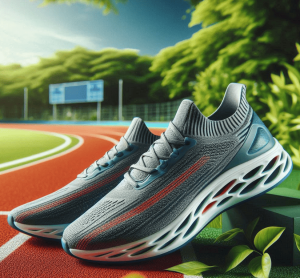Table of Contents
Cricket Roller, a sport cherished by millions, relies heavily on the condition of the pitch. A well-prepared pitch can make all the difference in the outcome of a match. One essential tool in achieving the perfect pitch is the Cricket Roller. This guide aims to provide a comprehensive overview of the factors to consider when choosing the right Cricket Roller for your grounds.

Understanding the Importance of a Cricket Roller
The pitch is the heart of any cricket ground. Its preparation and maintenance are critical to the game. A Cricket Roller is used to compact the pitch, ensuring it is flat and even. This process helps in creating a consistent bounce and pace, crucial for both batting and bowling. An uneven pitch can lead to unpredictable ball behavior, making the game less enjoyable and potentially unsafe.
Types of Cricket Rollers
There are several types of Cricket Rollers available, each designed to meet specific needs. Understanding the differences between these types is key to making an informed decision.
Manual Cricket Rollers
Manual rollers are typically lightweight and require physical effort to operate. They are ideal for smaller grounds or clubs with limited resources. These rollers are easy to maneuver and can be stored conveniently. However, they might not provide the same level of compaction as heavier, powered rollers.
Motorized Cricket Rollers
Motorized rollers are powered by engines, making them suitable for larger grounds. These rollers offer more consistent compaction and can cover large areas efficiently. They come in various weights and sizes, allowing groundskeepers to choose one that fits their specific requirements.
Combination Rollers
Combination rollers offer the best of both worlds. They can switch between manual and motorized operation, providing flexibility depending on the task at hand. These rollers are particularly useful for grounds that host different types of matches, from casual club games to professional fixtures.
Key Features to Consider
When choosing a Cricket Roller, several features should be taken into account to ensure you select the right one for your needs.
Weight
The weight of the roller is perhaps the most critical factor. Heavier rollers provide greater compaction, which is necessary for professional pitches. However, they can be difficult to maneuver and may require more maintenance. Lighter rollers are easier to handle but might not offer the same level of pitch preparation.
Material
Cricket rollers are typically made from steel or concrete. Steel rollers are durable and provide excellent compaction. Concrete rollers, while still effective, can be more affordable but may not last as long. Some modern rollers incorporate composite materials to balance durability and weight.
Width
The width of the roller affects how quickly it can cover the pitch. Wider rollers can complete the job faster but may be harder to control, especially in confined areas. Narrower rollers are easier to handle and more precise, which can be beneficial for fine-tuning specific areas of the pitch.
Ease of Use
Consider how easy the roller is to operate. Features such as adjustable handles, ergonomic designs, and intuitive controls can make a significant difference, especially for those who will be using the roller regularly.
Maintenance
Regular maintenance is crucial for the longevity and performance of a Cricket Roller. Opt for a roller that is easy to maintain, with accessible parts and clear maintenance guidelines. Regularly check for wear and tear, especially in motorized models, to ensure consistent performance.
Choosing the Right Roller for Different Pitch Conditions
Different pitch conditions require different types of compaction. Here’s a breakdown of what to consider based on the condition of your pitch.
Dry Pitches
Dry pitches tend to be harder and may require heavier rollers to achieve the desired compaction. Motorized steel rollers are often the best choice for these conditions, as they provide the necessary weight and consistency.
Wet Pitches
Wet pitches are softer and can be easily damaged if too much weight is applied. Lighter, manual rollers are ideal for these conditions as they provide gentle compaction without causing harm to the pitch surface.
Hybrid Pitches
Hybrid pitches, which combine natural and synthetic materials, require a balanced approach. Combination rollers are perfect for these types of pitches, allowing groundskeepers to adjust the compaction method based on the current state of the pitch.
Expert Tips for Using a Cricket Roller
Using a Cricket Roller effectively requires more than just rolling it over the pitch. Here are some expert tips to ensure optimal pitch preparation.
Consistent Rolling Patterns
Adopt consistent rolling patterns to ensure even compaction across the entire pitch. Overlapping passes slightly can help prevent missed areas and ensure a uniform surface.
Timing is Crucial
The timing of rolling is critical. Roll the pitch when it is slightly damp but not wet, as this helps achieve the best compaction without causing damage. Avoid rolling during heavy rain or when the pitch is too dry, as this can lead to cracks or uneven surfaces.
Monitor Pitch Conditions
Regularly monitor the condition of the pitch to adjust your rolling strategy as needed. Factors such as weather, usage frequency, and match schedules can all impact how and when you should roll the pitch.
Regular Maintenance
Perform regular maintenance on your Cricket Roller to keep it in top condition. This includes checking for mechanical issues, cleaning the roller after use, and ensuring all moving parts are well-lubricated.
Environmental Considerations
With increasing awareness of environmental sustainability, it’s essential to consider the ecological impact of your Cricket Roller. Opt for rollers that are fuel-efficient or use alternative power sources, such as electric or solar-powered models. These options not only reduce carbon footprints but also tend to be quieter and more cost-effective in the long run.
Cricket Roller
Choosing the right Cricket Roller is a vital decision that can significantly impact the quality of the pitch and, consequently, the game of cricket itself. By understanding the different types of rollers, key features to consider, and best practices for use and maintenance, groundskeepers can ensure their pitches are always in prime condition.
Whether you manage a small club ground or a large professional stadium, investing in the right Cricket Roller will pay dividends in the quality of the matches played. Remember, the heart of cricket beats strongest on a well-prepared pitch, and the right roller is essential to achieving that perfection.





More Stories
Unlock Lasting Strength with Stylish and Supportive Mens Joggers Shoes
Transform Your Runs with These Powerful Running Shoes Built for Pure Comfort
Discover the Best Running Shoes Ever for an Unstoppable Performance Boost